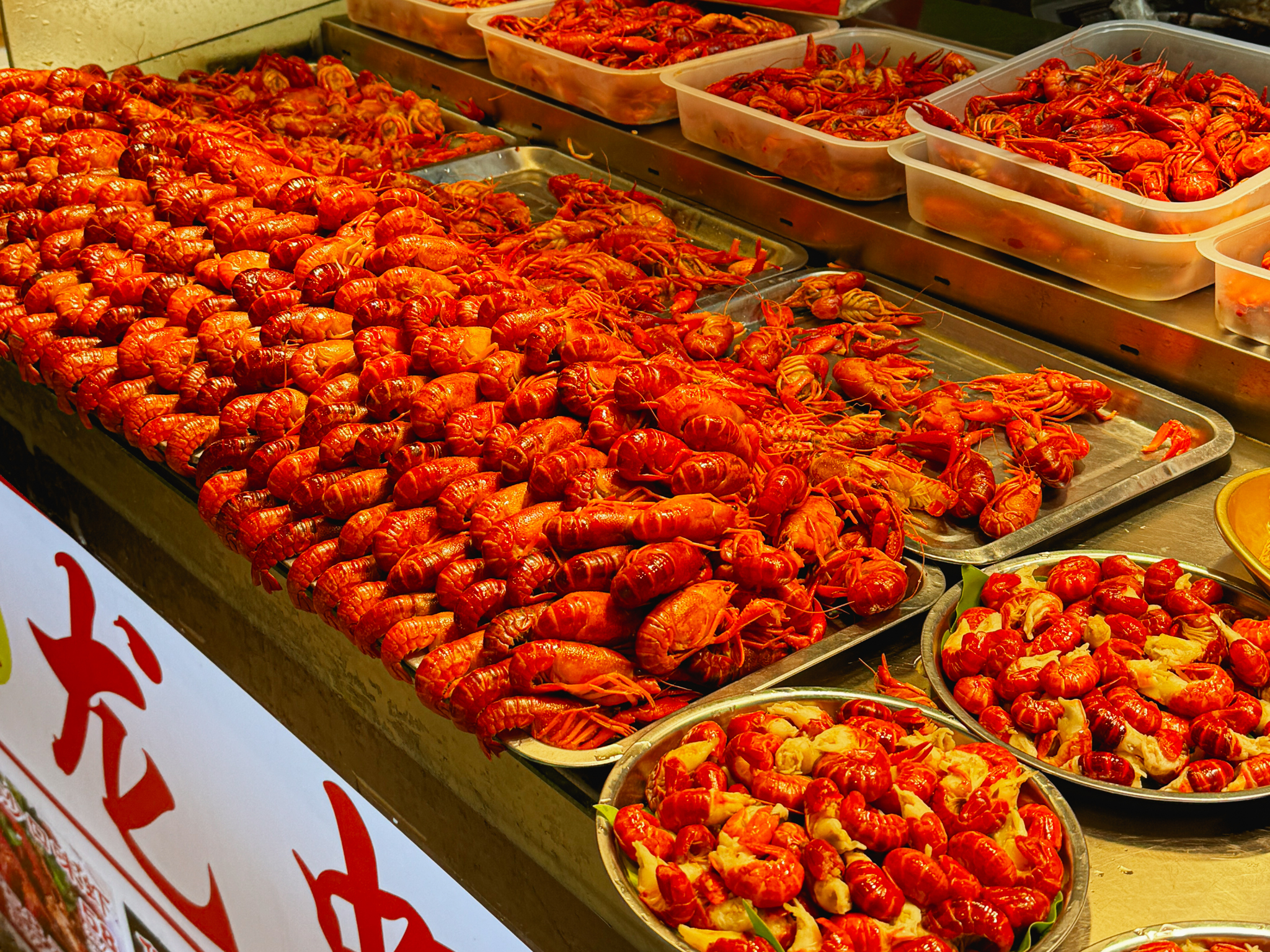
A five-minute overview of Changsha in China’s Hunan province. This area is notable for its spicy food, street style and bright lights.
Changsha is a city in China’s Hunan province which is seldom visited by Western tourists. In fact, during our six-night visit we only saw one other Western family, even staying in a downtown hostel.
Google will have you believe that there’s not much happening in Changsha besides its link to Mao Zedong who attended university in the city, but luckily, this is far from the truth.
Changsha is known as China’s television capital, and produces a lot of broadcast programming to service the country. It’s also an extremely modern city with a cool edge, which carries through to the fashion and food.
Recommended time spent: On a regular trip 2-3 days is enough to see it and leave wanting more, but you could spend 4-5 depending on your interests/style of travel.
Which area is best to stay in Changsha?
Anywhere in walking distance to the main mall (Huangxing Road) and Wuyi Square train station. If you stay further away there will be a more local neighbourhood feel which is fine if you like a slow pace but you’ll trade off the convenience of walkability.
The mall area is so mesmerising and fun to walk through, and it’s better to be close to public transport.
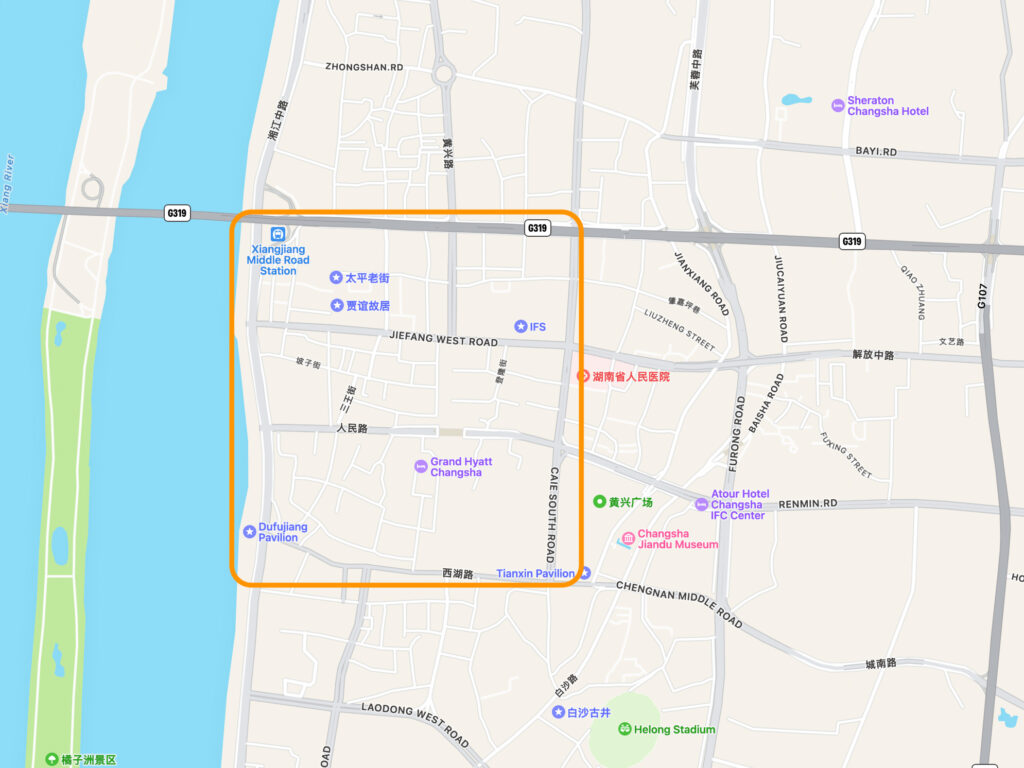
Watch out for
When visiting Orange Island you will need your passport to enter the site. You also need to register for entry and we found it very difficult to navigate with no English support available at the info centre. I would recommend booking an English guide for this experience if you can afford it as you will also be able to learn about the history and culture.
Lifestyle in Changsha
As well as being the nation’s entertainment centre, Changsha is famous for being the city Chairman Mao attended university and features a balance of Chinese history vs modern delights. It’s practically dripping with flashing lights, cool cars, huge clubs, modern tea shops, and sneaker stores.
When the sun goes down it’s like the city travels in time from a present-day brooding riverside metropolis into a flashing futuristic show of lights that easily rivals the Hong Kong skyline.
You’ll find the streets filled mostly with locals and Chinese tourists as it’s a popular domestic destination.
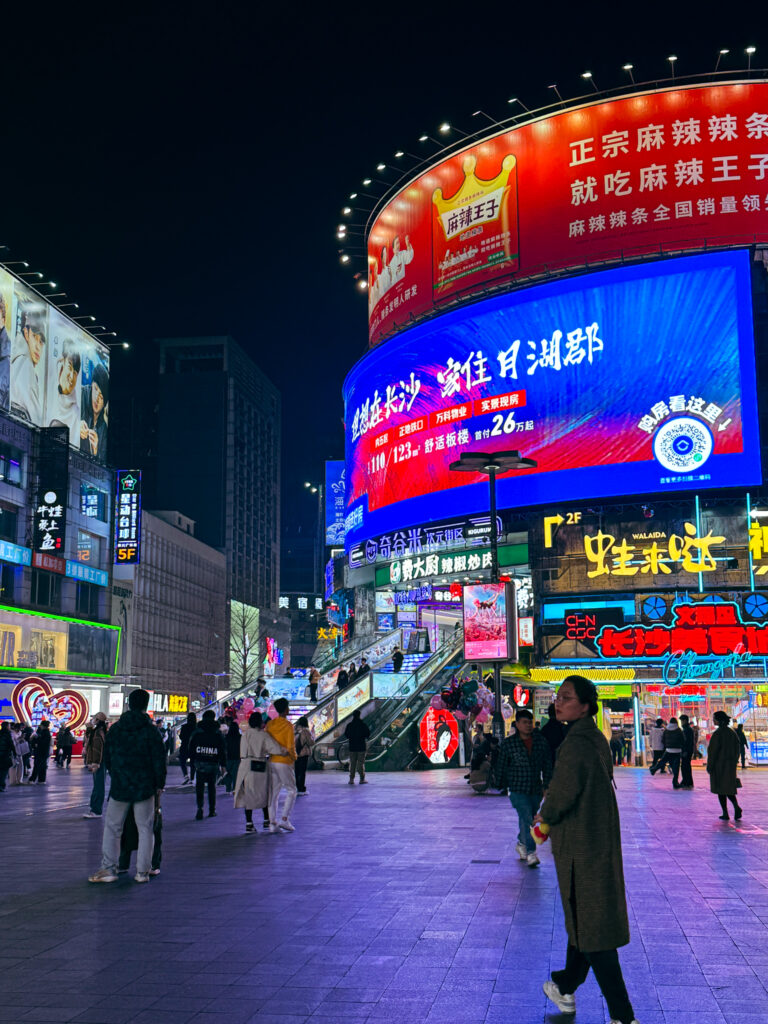
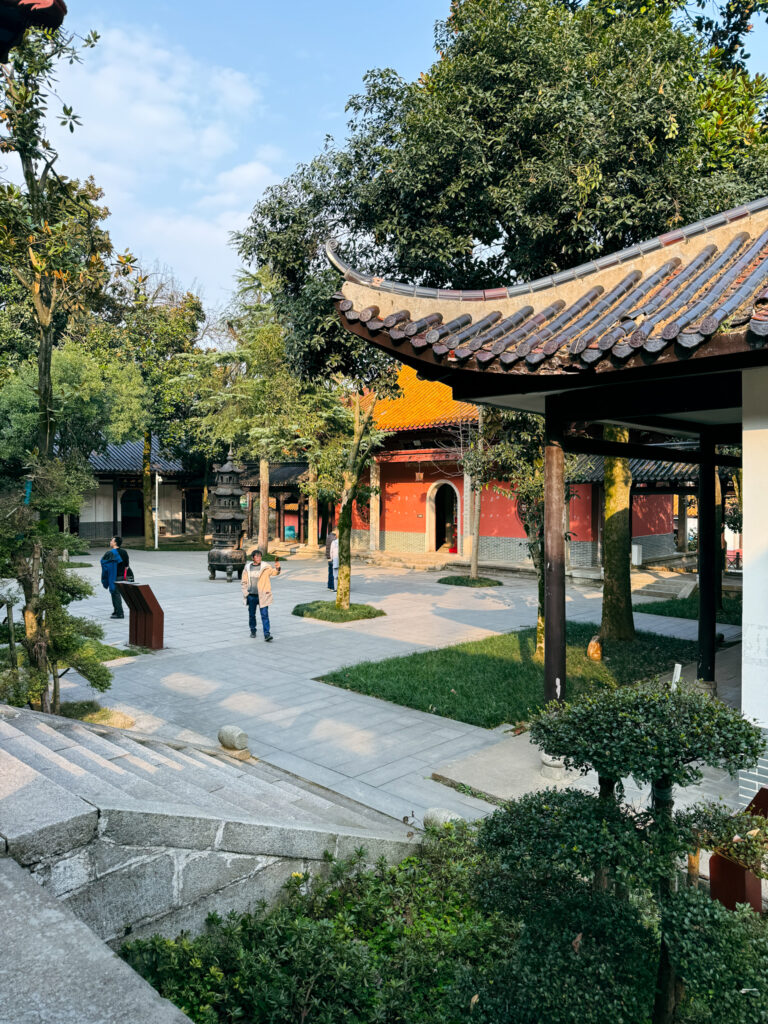
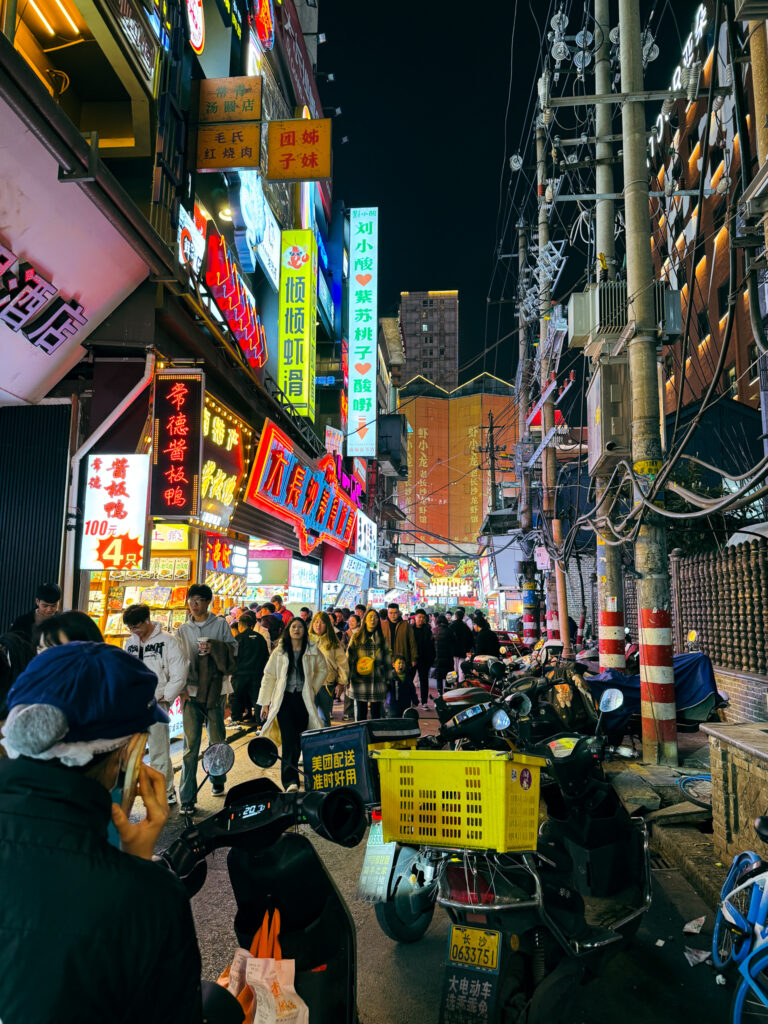
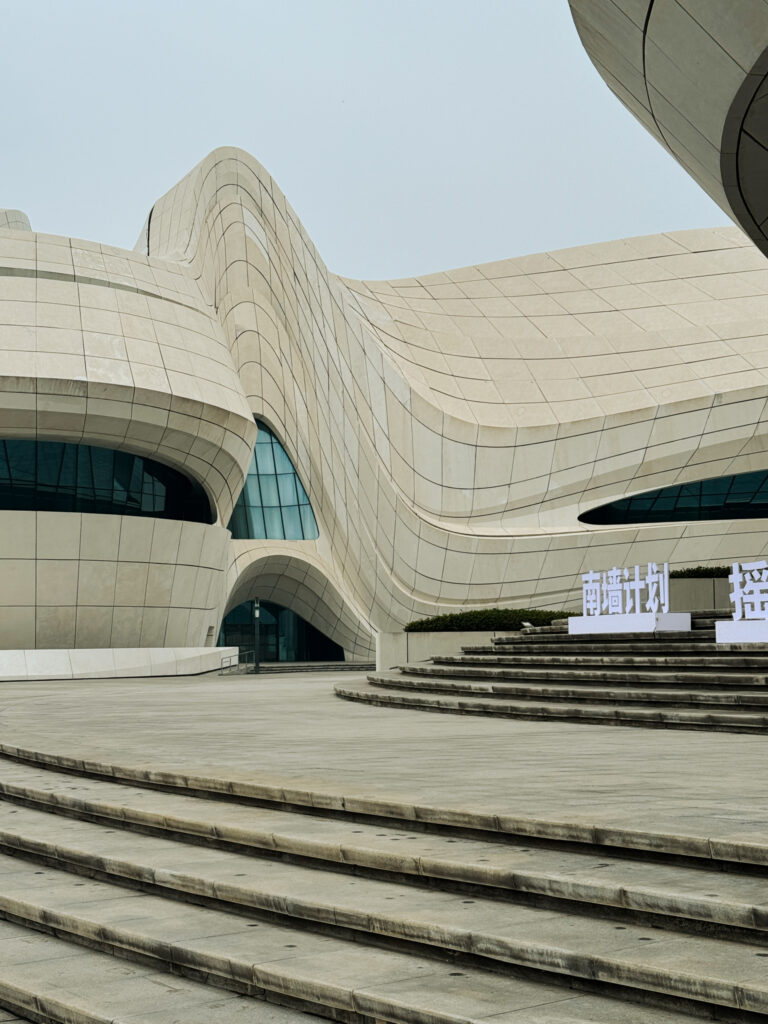
Top attractions in Changsha
- Orange Island
- Yuelu Mountain (amazing, so beautiful)
- Huangxing Road Walking Street (main mall starting at Wuyi Square)
- Changsha Meixihu International Culture and Arts Centre (designed by Zaha Hadid)
- Lucky Knot Bridge
- Wenheyou Laochangsha Lobster Restaurant
- HB Town (an Italian town replica theme park)
- Hunan Martyr’s Park
Hunanese foods to try
You’re in Hunan, which is known for spicy cuisine laden with fresh chillies, local Tujia food, stinky tofu called choudoufu, and rice noodles. Stinky tofu carts are absolutely everywhere and I highly recommend tasting this dish made of fermented and fried tofu (think tofu puffs) topped with a savoury light broth, fresh chilli, garlic and coriander. It’s not as crazy as it sounds, as most of the funk disappears when it gets cooked leaving just a light scent.
Here are some local dishes to try in Changsha:
- Fish head hotpot
- Stinky tofu (called choudoufu)
- Hot and sour rice noodles (find these at almost any local noodle shop)
- Dried whole duck (you’ll see this at the tourist shops)
- Chinese crawfish (a new local specialty)
- Cool bakeries (there are so many of these, Holiland is my favourite)
Check out my Instagram Story highlights for Changsha here for more context on the food and a better feel for the city.
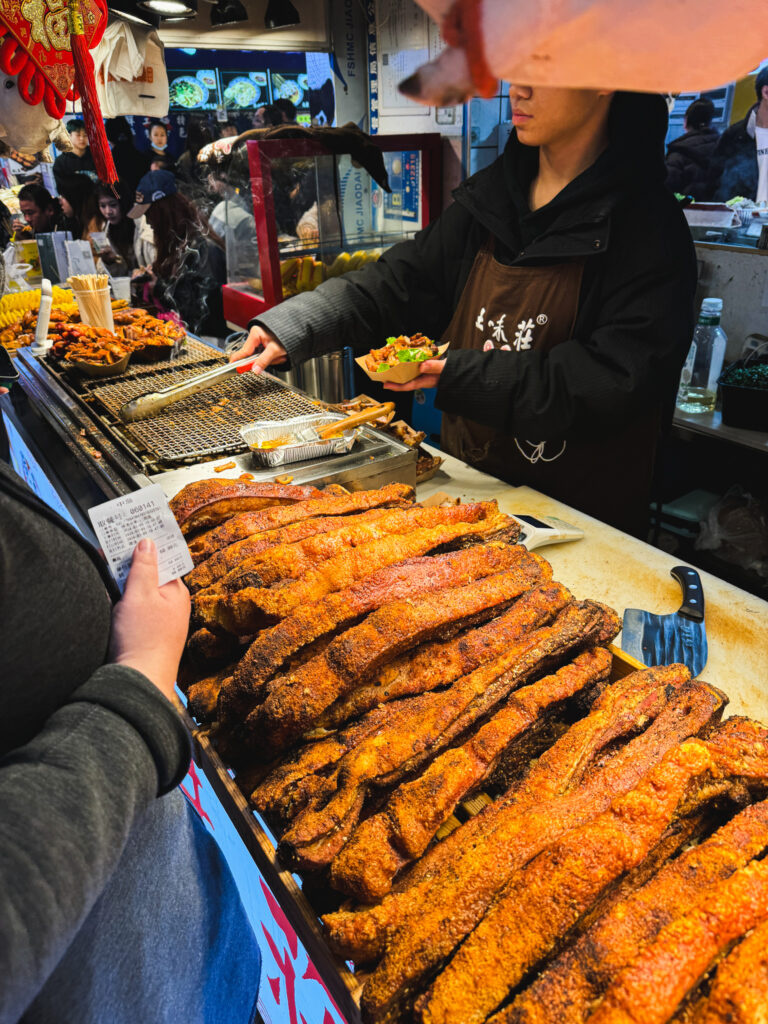
The best thing I ate in Changsha was this roasted pork from a market stall just off Huangxing Road Walking Street (the mall). It was so light and crisp, the fat just dissolved in my mouth and it had the most fragrant charcoal scent.
Shopping and souvenirs in Changsha
Changsha’s main mall and surrounds are overflowing with souvenir snack stores. Chinese tourists love buying food souvenirs and you can find almost every specialty dish vacuum-packed to bring home. Just be mindful of customs regulations when making your purchase.
The streetwear and clothing is also fun to shop, you can pick up well-made winter clothing like down jackets for a fraction of the price we pay in Australia. Activewear was also very trendy when I visited.
My favourite clothing store chains are Sanfu and Metersbonwe (younger, energetic) and Urban Revivo (more minimal, classic).
Just be weary of jewellery stores as they are hard sellers. If you walk in you will be bombarded with cups of tea and offers to try on anything you stop to look at for half a second which can be a bit overwhelming.
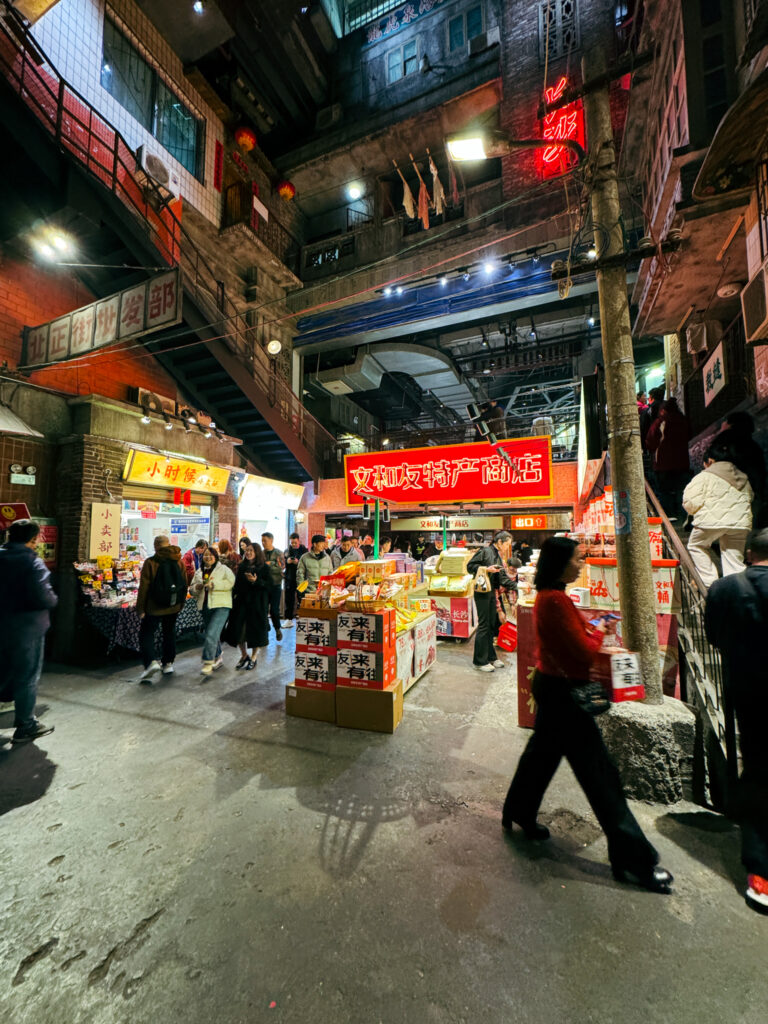
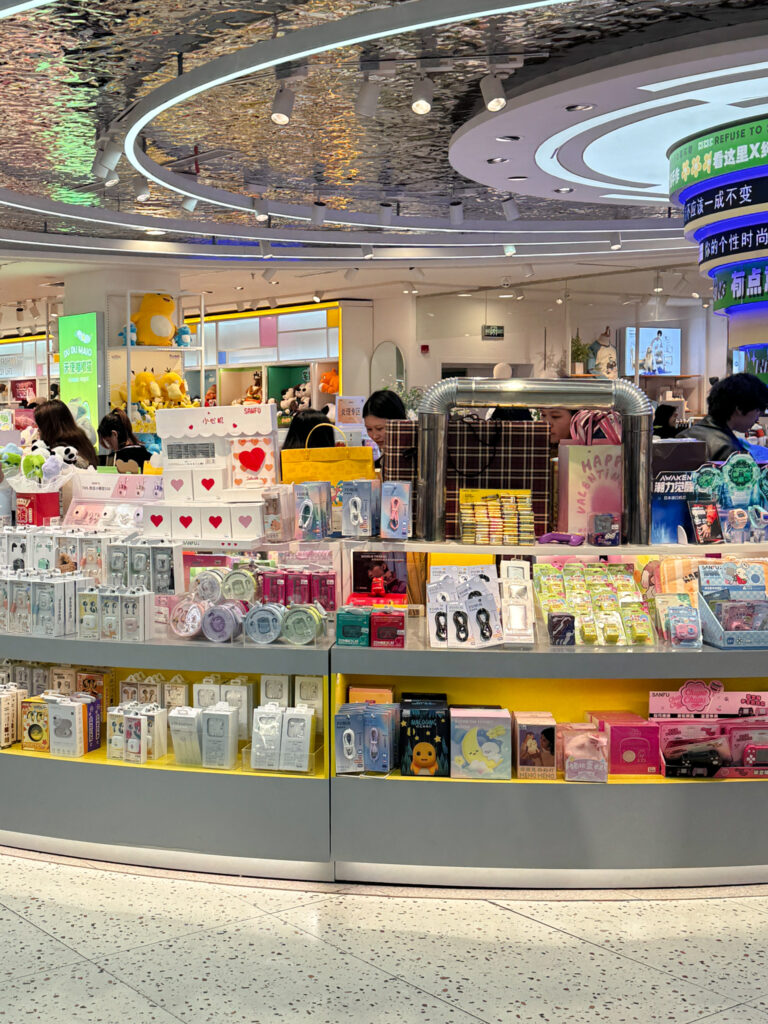
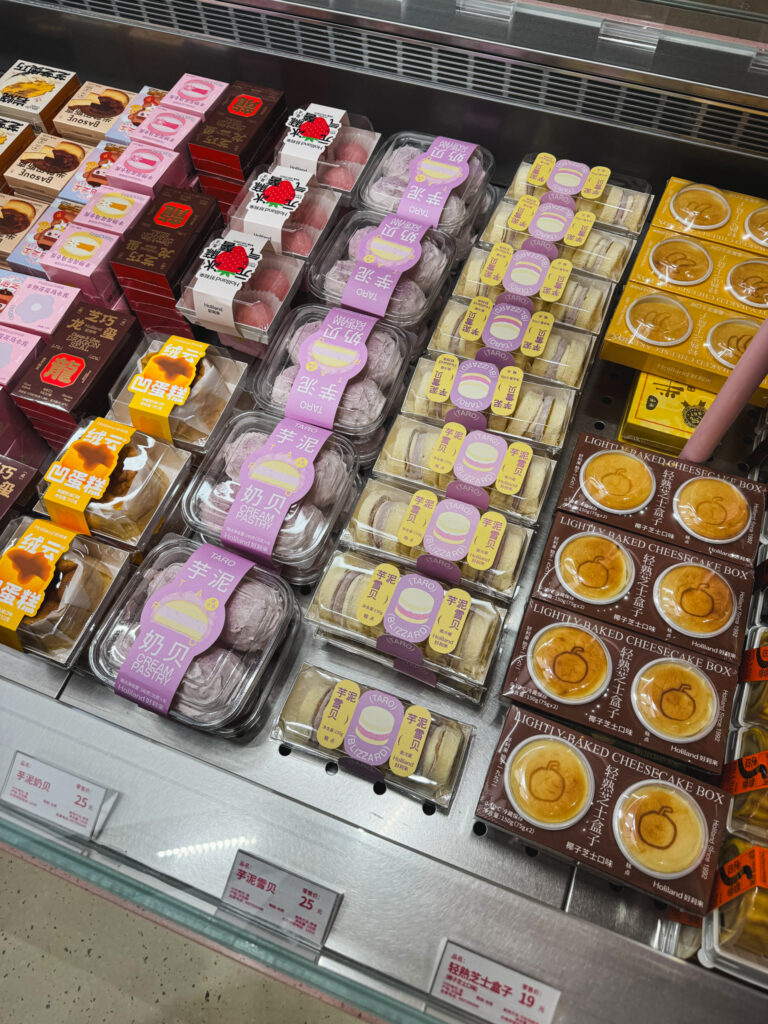
Approximate cost of things $AUD
Budget accommodation: ~$60 per room per night
Nice hotel room: $75-150 per room per night
Bowl of noodles: $5
Can of beer: $2
Nice mid-range dinner for two: $50
Disclaimer
Please keep in mind, this is all my own personal experience and everyone has a different travel style. I enjoy food, culture, soaking up the local lifestyle, a few fun tourist attractions and a little history and nature. My main joy when traveling comes from the food and culture, but you might prioritise the history, nature, or simply prefer luxury relaxation and fine dining over street food and value accommodation.
In terms of pace, I generally like to plan for one or two main activities per day, with usually one casual meal and one sit down meal and that’s what I’ve based this guide on. I hope this information helps you when planning your next trip!
To prepare for your visit, check out my ultimate travel guide for China and guide to visas for Australians.
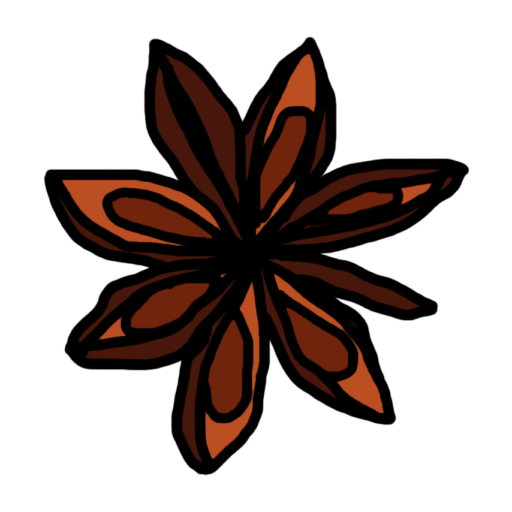
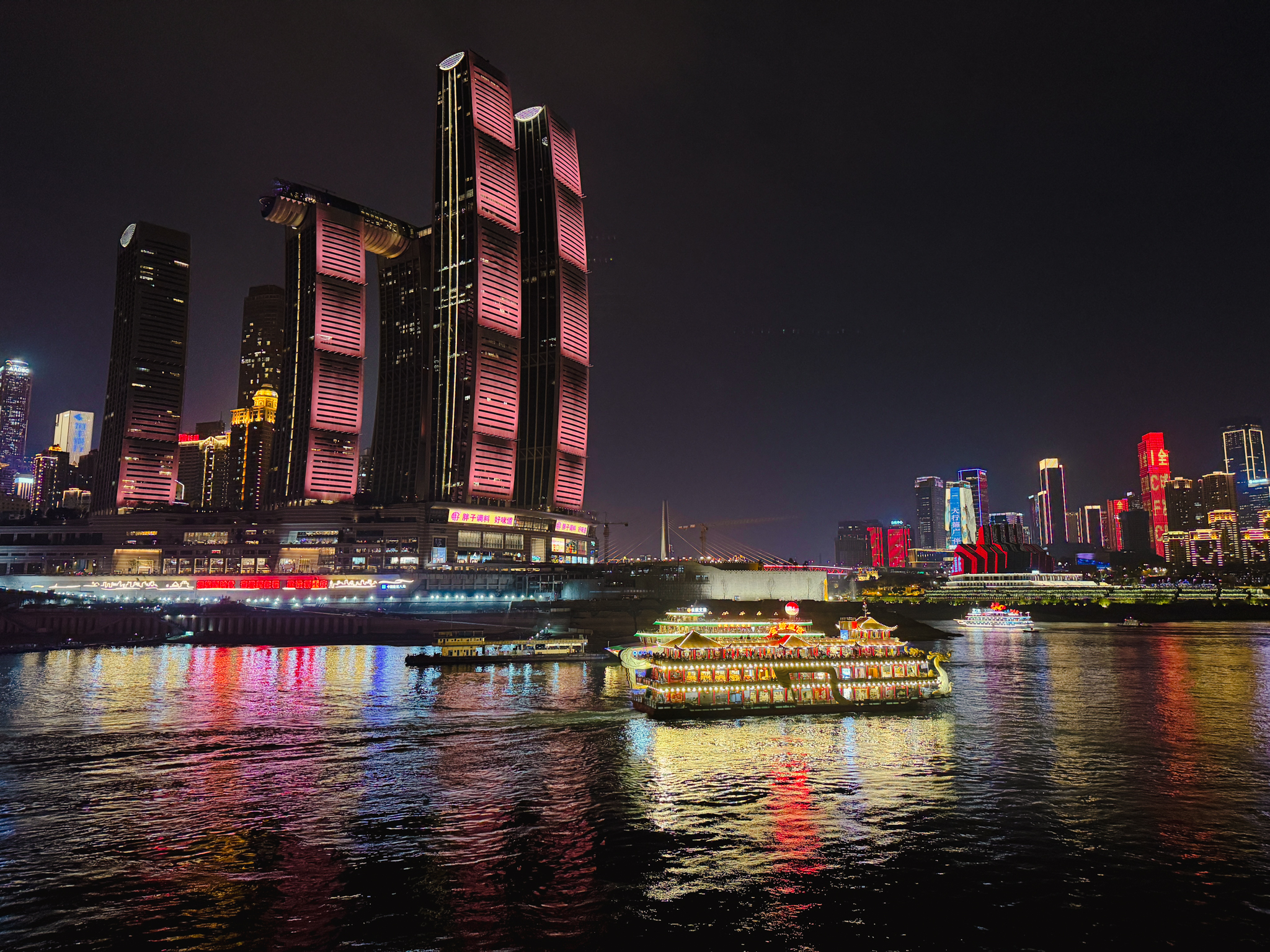
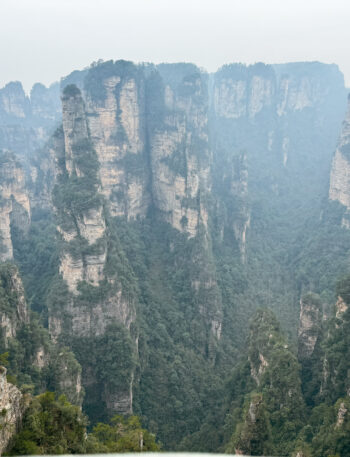
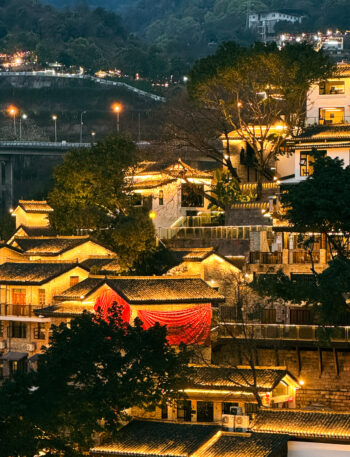
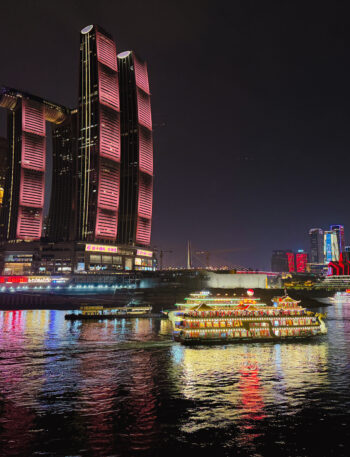

Hello! I’m in United States thinking about visiting your area. Any recommendations on place to stay close to things to do
Hi Greg, all the details are in the guide! Including a map on suggested accom areas and things to do.